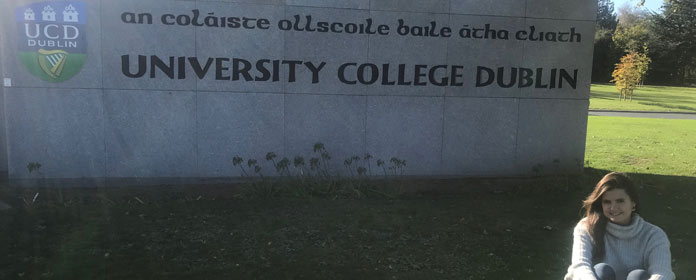"I searched for a Master's Degree that would give me up-to-date content on nutrition and health to have a personalized nutrition training and I found E-MENU."
Ana Ojeda is currently in Dublin researching childhood obesity in an international setting.

PHOTO: Courtesy
Ana Ojeda, graduated in Human Nutrition and Dietetics from the University of Granada ('15), completed the EuropeanMaster's Degree in Food, Nutrition and Metabolism (E-MENU) and is now doing the doctorate in the School of Pharmacy and Nutrition of the University of Navarra.
"I set out to find a Master's Degree that would bring me closer to the most updated knowledge on the relationship between nutrition and health in order to have a training in the field of personalized nutrition", says Ana. The elaboration of the work Fin de Master's Degree is what allowed me to "consider the idea of doing the thesis doctoral degree at department of Food Science and Physiology, at partnership with the Clínica Universidad de Navarra and the Navarra Hospital Complex".
Ana is currently doing the thesis with the "goal to evaluate the influence of different dietary patterns on telomere shortening in two populations: the elderly of the SUN Cohort and the obese infant-juvenile population", says Ana. In addition, in order to obtain the accredited specialization from doctorate International, "I am spending three months at the National Nutrition Surveillance Centre (NNSC), University College Dublin (Dublin, Ireland) -she says- where I am participating in a European project led by the WHO, based on the surveillance of childhood obesity in an international setting".
On the other hand, Ana is part of the project Lifeways Cross-Generation Cohort Study, a cohort that collects data from three generations (children, parents and grandparents), basing its study on telomere analysis and possible intergenerational influence. "Thanks to this opportunity I can consolidate the learning of the scientific method and the research in Human Nutrition and Obesity as a graduate student in an international scientific environment," she concludes.




